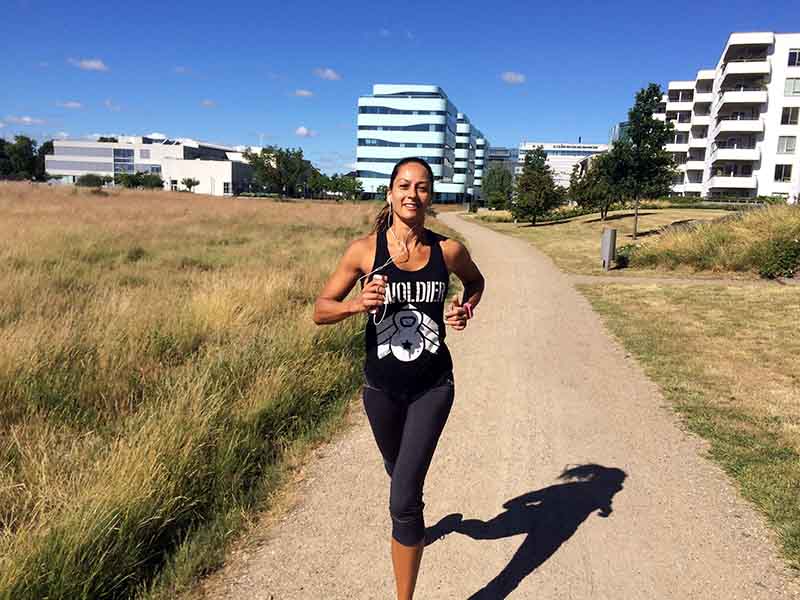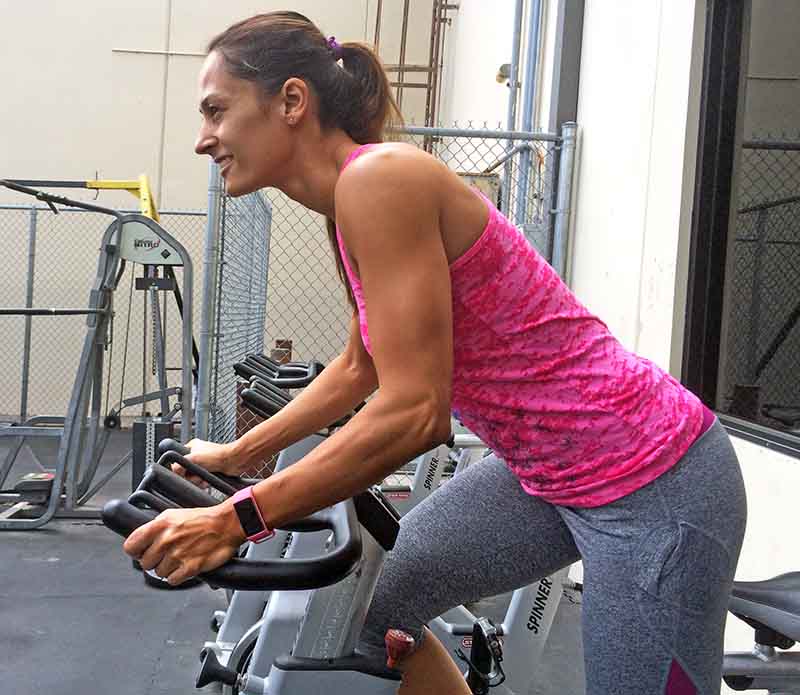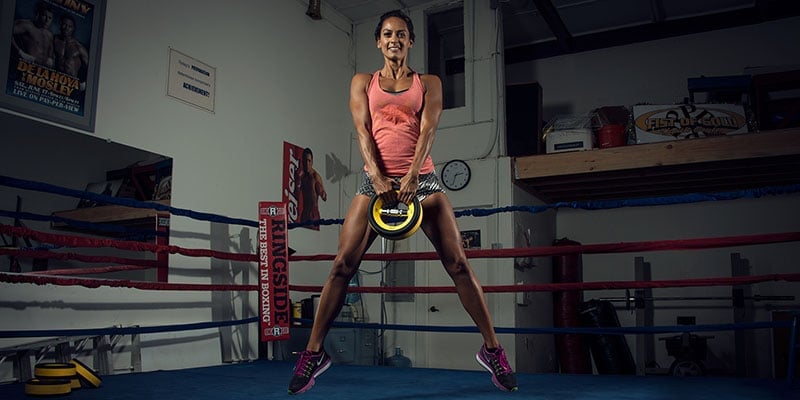Before any type of exercise or activity, you may need to do some mental gymnastics to determine the right amount of insulin and carbohydrates necessary to fuel your body and prevent high or low blood sugars.
Let’s dive into how you can prevent low blood sugar during cardio workouts.

What to consider before you start exercising
The questions you need to ask yourself are:
- Where am I now?
- Where am I going?
When it comes to pre-workout nutrition, you could think of your body as a car. If you are only going to drive around the block, you probably don’t need to fill the gas tank. However, if you were driving out of state, you certainly would need to top off before hitting the road.
Planning for the amount of fuel you need is the first step. You will also need to consider the intensity of the activity. You probably know that driving fast burns more fuel. The same is true in the body.
People with insulin-dependent diabetes have a more complex system than this. In addition to knowing how much fuel you need, you must also consider the amount of carbohydrates in your body relative to the insulin on board (the insulin remaining in your body since your last bolus including the current basal rate).
You must also answer this question: How much carbohydrate do I need to offset the current insulin on board?
To answer that question, you will determine five variables:
- When you had your last bolus
- How many units it was
- How many correction units/ boluses were taken
- The timing of corrections
- Current basal rate per hour (or total long-acting Lantus or other longer-acting insulins).
The amount of carbohydrates is the variable a person with diabetes needs to know to perform well. Carbohydrates provide both energy (fuel in the tank) and an offset to insulin on board.
Proteins and fats must also be considered, although their contribution to raising blood sugar is less and slower.
Below, we will evaluate three timing options prior to your activity and discuss how to work out a pre-activity plan.
Three hours before exercise
Taking your insulin three hours before an activity means that the insulin will have little impact on your blood sugar when you exercise. Most rapid-acting insulins only affect the body for 3.5 to 4 hours. However, what you do in this window will set you up for success in your activity.
Three hours before a workout, you can eat a regular meal and take your normal bolus amount. If you are on an insulin pump, there is usually no need to modify your basal rate at this point.
The amount of carbohydrates to eat at this point depends on your overall daily diet, but it I recommend that you include at least some carbohydrates with a ratio of around 80 percent slow-burning (low-glycemic) carbohydrates to 20 percent fast-acting (high glycemic) carbohydrates.
NOTE: If your planned cardio activity is of long duration or intensity (like a half-marathon), you will probably need to up your low-glycemic carbohydrate intake at this point to ensure that you have the necessary energy to perform.
3 hours before exercise recommendation summary
- Bolus normally
- Consume a meal with an 80/20 slow/fast burning carbohydrate ratio
- Keep baseline basal rates running normally


One hour before exercise
The hour before exercise is a critical period. If you are hungry and need to bolus, this will have a substantial impact on your blood sugar.
Many insulins peak between 50 and 90 minutes. They will remain active during your entire activity and potentially longer than your workout period.
Consuming carbohydrates during this window can have a positive influence on exercise performance, but potentially a negative impact on blood sugar management.
If you decide to eat some carbohydrates, you are left with the question of what to do with your insulin. There are three good options, and they all depend on the insulin on board and the carbohydrates needed to perform.
Here is where you need to be a forecaster rather than a fortuneteller. It’s the “Know Before You Go” plan. The three options are:
- Consume no carbohydrates. Do not take a bolus.
- Consume healthy fats and/or lean proteins. Do not take a bolus or corrections.
- Consume carbohydrates. Consider bolusing.
1. Consume no carbohydrates. Don’t take a bolus.
This is the simplest of the three options. It does not require any particular change to the regimen until right before your activity. Your primary consideration will be to monitor high blood sugar.
If your blood sugars are high, I recommend you make any corrections at 40% of the suggested pump correction factor. I’ve also had good results with turning off the pump basal immediately before exercising to prevent low blood sugar.
2. Consume healthy fats or lean proteins. Do not take a bolus or corrections.
Another simple option is to eat healthy fats and/or lean proteins in the 60-minute window before exercise. This also does not require any change to the regimen until you’re about to start your activity. You don’t have to take a bolus or make any corrections to your pump.
Eating healthy fats and proteins during this period will help satiate you and keep your energy level up without spiking your blood sugar. Any insulin on board will not adversely affect your workout after eating healthy fats and proteins. Both macronutrients absorb more slowly, so they provide excellent long-lasting energy.
Examples of these foods are seeds, avocados, and egg whites. You will find that this option is great in its simplicity and ability to fuel workouts!
3. Consume carbohydrates. Take bolus.
If you have to eat carbohydrates this close to working out, then eat no more than 100 calories worth. That’s about 20 grams of carbohydrates.
You should not eat any more than 20 grams of carbohydrates because the insulin you take during this period will cause a dramatic reduction of blood sugar during exercise. It will also require you to eat more carbohydrates during exercise. The less insulin you take before exercise, the less you will have to eat during an activity.
It’s also a good idea to eat slower-burning, low-glycemic carbohydrates during this period. Eating fast-burning, high-glycemic carbohydrates will spike your blood sugar too fast, making you go high at the start of your workout.
The key to this option is the size of the bolus you take to offset the carbohydrates. You want to be easy with the bolus and possibly not even take one.
Any corrections made in this time window should be half the normal correction amount to avoid a significant impact on blood sugar during exercise.
Often when someone takes a full correction this close to exercising, they will slip into low blood sugar within the first 20 to 30 minutes of exercise. The result can be incredibly frustrating when you’re trying to focus on an important practice or get in a short amount of activity. Smaller corrections will bring your blood sugar down slower, as long as you begin exercise soon afterward.


Know before you go
The key to peak performance and managing this critical period is planning.
Know when you will be active and plan your diet (and consequently insulin needs) well in advance. If you know you are going to be active during the day, try to consume a larger portion of carbohydrates well in advance of your intended exercise. This will not only give you enough to take the proper bolus and correction, but it will also give you plenty of time to process enough carbohydrates to perform at your best.
This strategy is similar to the cycling concept of separating braking and swerving to safely lean through a turn. Hammering the brakes in the middle of a turn increases the likelihood of crashing. Taking a bolus just before exercise is like braking in the middle of a turn. Following these guidelines will help you separate the braking from the swerving and get you through your activity safely.
30 minutes prior to exercise
This time window requires similar considerations as the one hour before exercise window. The major difference is fine-tuning your basal (if you are a pumper) depending on whether you have slightly high or low blood sugar.
For instance, blood sugar between 180 and 200 mg/dl (10 and 11 mmol/l) can be managed with a temporary basal rate adjustment increase of 20 percent from baseline for 30 minutes instead of taking a correction bolus. The little bit of extra insulin will help to lower a slightly elevated blood sugar once you begin exercising.
If your blood sugar is more than 200 mg/dl (11 mmol/l) it would be better to do half the normal bolus correction.
Deciding not to eat in this window could also impact your blood sugar. If you don’t eat and you have slightly low blood sugar, you should reduce your basal rate between 10% and 50% from baseline.
If you are not using a pump and are on injection therapy, you may opt to consume a small amount of carbohydrates if your blood sugar is lower than 115 mg/dl (6.4 mmol/l).
Conclusion
Much of what I have been describing in this post is a proactive approach to food and insulin management. Keep in mind that life often will get in the way of the perfectly set up activity and routine! Be flexible and always carry extra glucose.
The key takeaway is to remember that the adjustment of total insulin on board and carbohydrates are what will set you up for success when it comes to cardio. Practicing these principles does take experience, and it will take time to hone in on your routine.

